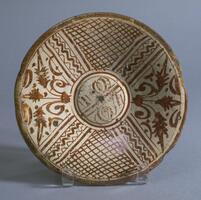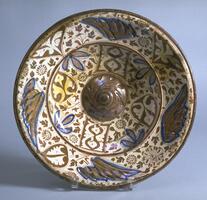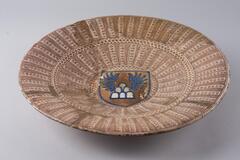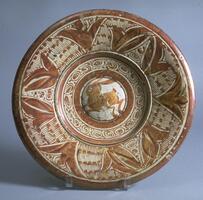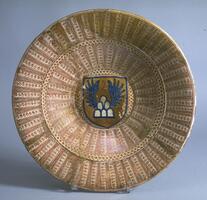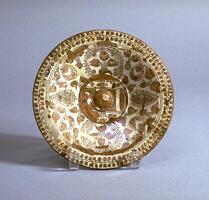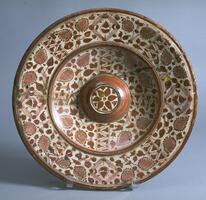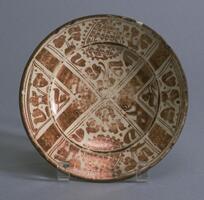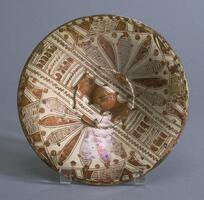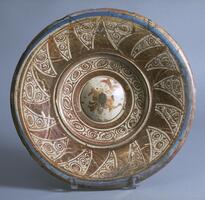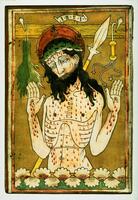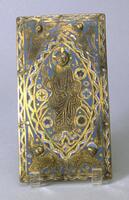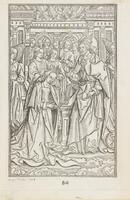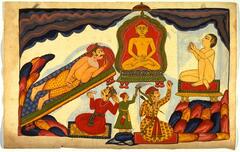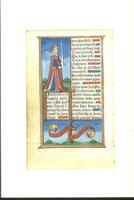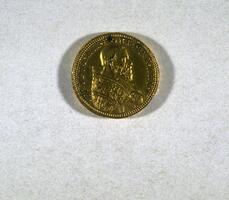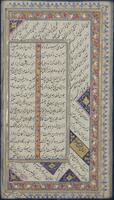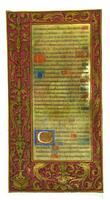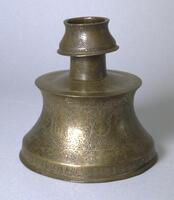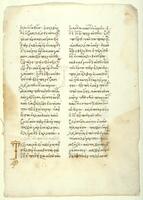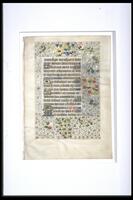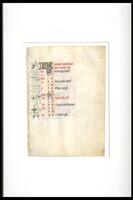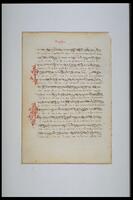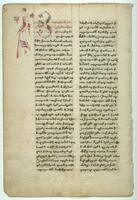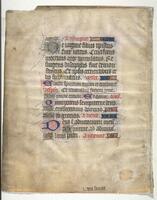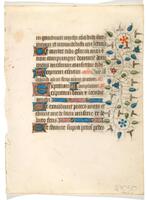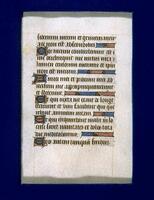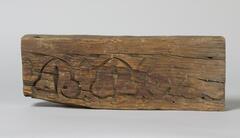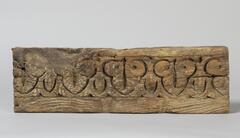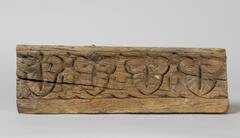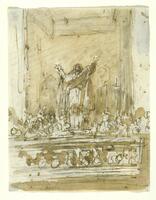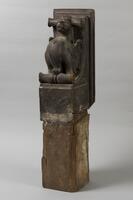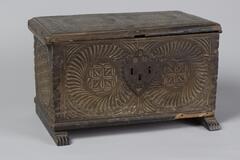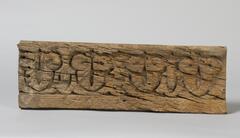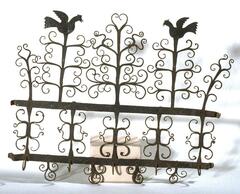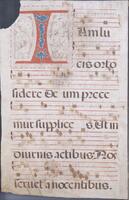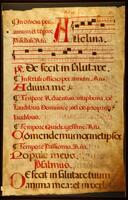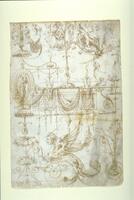37 Items in this Learning Collection
Collection Object
Collection Object
Collection Object
Collection Object
Collection Object
Collection Object
Collection Object
Collection Object
Collection Object
Collection Object
Collection Object
Collection Object
Collection Object
Collection Object
Collection Object
Collection Object
Collection Object
Collection Object
Collection Object
Collection Object
Collection Object
Collection Object
Collection Object
Collection Object
Collection Object
Collection Object
Collection Object
Collection Object
Copyright
All Rights Reserved
()
Dish with Floral Motifs
Accession Number
1972/2.120
Title
Dish with Floral Motifs
Artist(s)
Moorish
Artist Nationality
Moorish
Object Creation Date
17th century
Medium & Support
earthenware with luster
Dimensions
2 9/16 in x 15 9/16 in x 15 9/16 in (6.5 cm x 39.5 cm x 39.5 cm);2 9/16 in (6.5 cm);x 15 9/16 in x 15 9/16 in x 39.5 cm x 39.5 cm
Credit Line
Transfer from the College of Architecture and Design
Label copy
March 28, 2009
The two dishes exhibited here are later examples of Spanish lusterware, one of the most important traditions in the art of European ceramics. During the fourteenth century, Muslim artists who immigrated to the Kingdom of Valencia (a region under Christian rule on the east coast of Spain) began to manufacture a special type of ceramic ware that had a long tradition in Islamic kingdoms, but had not been produced in Christian Europe for many centuries. What distinguished their ceramics was not the ceramic itself, but the opaque-white glaze that provided an unrivaled background for more colorful painted decoration and the luster glaze produced by a final firing, which gave the ceramics an attractive metallic iridescence. By the fifteenth century, such lusterwares were produced in several centers in Christian Spain and were exported widely. Although Christian artists took over the production of such lusterwares during the fifteenth and sixteenth centuries, the designs on later dishes reveal this Islamic heritage. The popularity of lusterware led Italian artists to start producing their own lusterwares, known as maiolica, in the sixteenth century. The use of the opaque-white glaze first introduced to Christian Europe through Spain spread even more widely to other centers of ceramic production throughout Europe, where it was used for many types of wares, including faience in France and Delftware in Holland.
Subject matter
This dish is a later example of Spanish lusterware, a type of glazed earthenware first produced in Christian Europe by Muslim artists working in fourteenth-century Spain. This type of ware was valued for both the opaque white glaze that provided an unrivaled background for more colorful painted decoration and the luster glaze produced by a final firing, which gave the ceramics an attractive metallic iridescence. By the fifteenth century, such lusterwares were produced in several centers in Christian Spain and were exported widely. Although Christian artists took over the production of such lusterwares during the fifteenth and sixteenth centuries, the designs on later dishes still reveal this Islamic heritage.
Physical Description
This dish features a recessed center with a central boss decorated with a rosette design. The recessed area and rim are painted with floral motifs and leaf designs arranged in concentric rings.
Primary Object Classification
Ceramic
Primary Object Type
dish
Collection Area
Western
Rights
If you are interested in using an image for a publication, please visit http://umma.umich.edu/request-image for more information and to fill out the online Image Rights and Reproductions Request Form.
Keywords
Hispano-Moresque
dishes (vessels)
earthenware
floral patterns
lusterware
1972/2.120
Title
Dish with Floral Motifs
Artist(s)
Moorish
Artist Nationality
Moorish
Object Creation Date
17th century
Medium & Support
earthenware with luster
Dimensions
2 9/16 in x 15 9/16 in x 15 9/16 in (6.5 cm x 39.5 cm x 39.5 cm);2 9/16 in (6.5 cm);x 15 9/16 in x 15 9/16 in x 39.5 cm x 39.5 cm
Credit Line
Transfer from the College of Architecture and Design
Label copy
March 28, 2009
The two dishes exhibited here are later examples of Spanish lusterware, one of the most important traditions in the art of European ceramics. During the fourteenth century, Muslim artists who immigrated to the Kingdom of Valencia (a region under Christian rule on the east coast of Spain) began to manufacture a special type of ceramic ware that had a long tradition in Islamic kingdoms, but had not been produced in Christian Europe for many centuries. What distinguished their ceramics was not the ceramic itself, but the opaque-white glaze that provided an unrivaled background for more colorful painted decoration and the luster glaze produced by a final firing, which gave the ceramics an attractive metallic iridescence. By the fifteenth century, such lusterwares were produced in several centers in Christian Spain and were exported widely. Although Christian artists took over the production of such lusterwares during the fifteenth and sixteenth centuries, the designs on later dishes reveal this Islamic heritage. The popularity of lusterware led Italian artists to start producing their own lusterwares, known as maiolica, in the sixteenth century. The use of the opaque-white glaze first introduced to Christian Europe through Spain spread even more widely to other centers of ceramic production throughout Europe, where it was used for many types of wares, including faience in France and Delftware in Holland.
Subject matter
This dish is a later example of Spanish lusterware, a type of glazed earthenware first produced in Christian Europe by Muslim artists working in fourteenth-century Spain. This type of ware was valued for both the opaque white glaze that provided an unrivaled background for more colorful painted decoration and the luster glaze produced by a final firing, which gave the ceramics an attractive metallic iridescence. By the fifteenth century, such lusterwares were produced in several centers in Christian Spain and were exported widely. Although Christian artists took over the production of such lusterwares during the fifteenth and sixteenth centuries, the designs on later dishes still reveal this Islamic heritage.
Physical Description
This dish features a recessed center with a central boss decorated with a rosette design. The recessed area and rim are painted with floral motifs and leaf designs arranged in concentric rings.
Primary Object Classification
Ceramic
Primary Object Type
dish
Collection Area
Western
Rights
If you are interested in using an image for a publication, please visit http://umma.umich.edu/request-image for more information and to fill out the online Image Rights and Reproductions Request Form.
Keywords
Hispano-Moresque
dishes (vessels)
earthenware
floral patterns
lusterware
![This dish features a three part structural division; the boss is almost flat. Around the depressed area is a band of degenerate Gothic [or pseudo-Arabic] script. On the brim are solid lustre painted zig-zags, possibly a late version of gadroons. The empty areas of this pattern are filled with dots and floral motifs. The reverse has repeated circles only. This dish features a three part structural division; the boss is almost flat. Around the depressed area is a band of degenerate Gothic [or pseudo-Arabic] script. On the brim are solid lustre painted zig-zags, possibly a late version of gadroons. The empty areas of this pattern are filled with dots and floral motifs. The reverse has repeated circles only.](/media/W1siZiIsIjIwMjIvMDUvMjUvNHVtdXlvNGgwcF9kZWZhdWx0LmpwZyJdLFsicCIsInRodW1iIiwiMjQweDIwMCJdXQ?sha=4c312278c29b047b)
